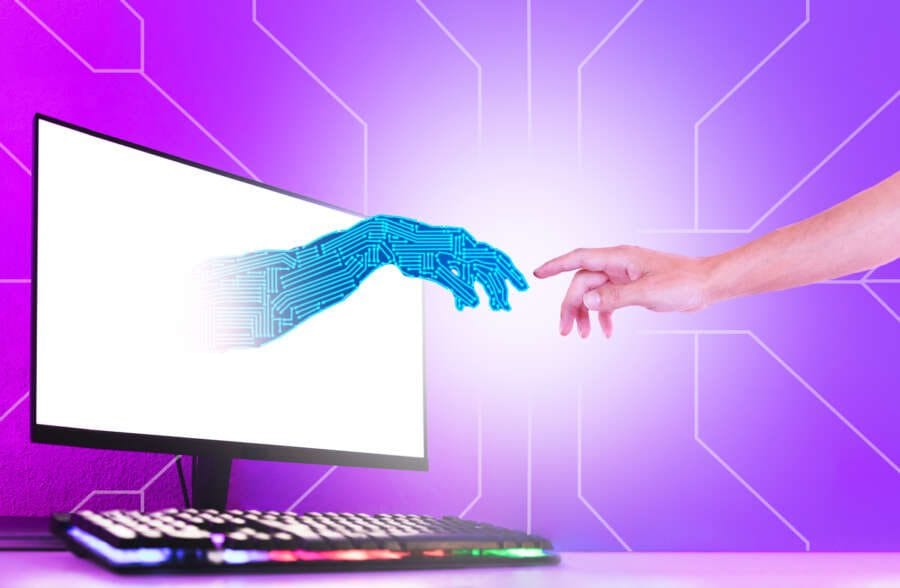

Stanley Kubrick’s ‘2001: a space odyssey’ seems errily accurate. HAL 9000, the sentient computer from the 1968 movie was particularly inquisitive on the crew’s emotional state to the point at which it assumes full control.
Dave Bowman, one of the five man crew on the spaceship Discovery asked HAL to open the doors….
HAL: “I am sorry Dave, I cannot do that.”
Dave: “HAL, I won’t argue with you anymore! Open the doors!”
HAL: “Dave, this conversation can serve no purpose anymore. Goodbye.”
Fantastic sci-fi absolutely, but 55 years on….we are getting closer to this being realty. On 30th November 2022, Open AI, a start-up from Silicon Valley which started life as a non-profit to advance AI technology launched ChatGPT on the world stage. The impact was profound. Within two months it had attracted over 100 million users. Tik Tok took 9 months to get to 100 million, Instagram took 30 months.
ChatGPT is a text generating AI chatbot. It can search, analyse and present its response in any style or languge of your choice. It is the first signs we have of a technology co-pilot to support us in our daily lives.
The next version, GPT-4 accepts inputs in the form of both text and images to generate text outputs. GPT-4 sets a bar as it can alayse over 100+ trillion parameters compared to GPT-3 which covered some 175 billion parameters.
The opportunity is mind boggling but the very prospect has led to more than 30,000 people – including Tesla’s Elon Musk, Apple co-founder Steve Wozniak – to signing an open letter calling for a six-month pause on training AI systems more powerful than GPT-4.
So why are such tech heavyweights trying to slow down when most tech titans live by the infamous motto of Mark Zukerberg, founder of Meta (facebook): “Move fast and break things.”
Sure some of the signatories may be hoping that they can stall any one technology becoming the dominat player similar to Google’s capture of the internet search market. While others are genuinely concerned that we are unleashing a platform that can impact every area of humanity including health, education, politics and even programming new code.
For those who have tried it, its so addictive that its rapidly becoming our life’s co-pilot. My wife, who cannot under any circumstances be described as digitaly proficient has just created our family holiday agenda using ChatGPT.
Satya Nadella, CEO of Microsoft is so convinced by the technology he has invested some USD$ 10 billion into the company behind the technology and plans to add it to the Microsoft 365 suite of products as a co-pilot. He is convinced it will “fundamentally change the way we work.”
This is where those outside the box are starting to ask questions.
Are we ready to change the way we work particularly in an economic downturn which is also putting pressure on employers and employees globally.
According to Goldman Sachs, Generative AI is set to affect 300 million jobs across major economies but at the same time technology could boost global GDP by 7 per cent. It is estimated that about two-thirds of jobs in the US and Europe are ‘at risk’ to some degree of AI automation.
The report discusses the potential impact of Generative Ai, such as ChatGPT, which could spark a period of “rapid acceleration in task automation” driven by the technology’s ability to communicate “like a human” with other machines. This capability brings even “white-collar” jobs into its sights.
It is easy to fall into the trap of the Luddites and naysayers and feel threatened by AI. But AI can create new opprotunities and new ways of improving our livelihoods and humanity as a whole. For example, a front line worker who is not digitally savvy can now benefit from all the resources available on the internet, real-time, to support their decision making. This will greatly improve productivity and improve earning potential. Satya Nadella recently referred to this as re-engineering the front line worker to a knowledge based worker.
Addressing skill shortages across all levels could also be a revolutionary consequence of AI.
Consider coding where there is a worldwide shortage of software engineers. The answer is No-code and Low-code platforms. These are software platforms that simplify digital transformation by enabling the development and deployment of digital products with minimum efforts and resources. More specifically, low-code reduces programming efforts to a minimum, while no-code empowers anyone to create apps without any programming knowledge. The key driver for their growth is the ever-growing demand for digital solutions and the shortage of skilled developers to produce them.
Combining Generative AI with such platforms, can help us create digital applications for routine tasks quickly and efficiently and create a new paradigm for software development.
Before we look at the oportunities, it is important to agree as a human race, how far we are willing to go. The open letter, from The Future of Life Institute, signed by Musk, Wozniak and around 30,000 others, warned “AI systems with human-competitive intelligence can pose profound risks to society and humanity,” it says. “Should we develop non-human minds that might eventually outnumber, outsmart, obsolete [sic] and replace us?”
If HAL was around today, he (it) would be impressed and potentially feel insecure about Generative AI but as 2001: a space odyssey reminds us, it’s important to ensure that humans keep one hand on the off switch!


